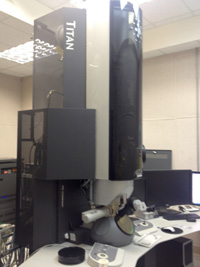
A transmission electron microscope at KIST.
By Michael Banks
The first thing Kyung-Ho Shin, vice president of international affairs at the Korean Institute of Science and Technology (KIST), passed me when we met in the lobby of my hotel today was an umbrella.
Today Seoul has had a very good watering, but after the recent warm weather the change could be seen as being welcome.
In the morning’s pouring rain, I visited KIST, which was created in 1966 to help commercialize basic research. The 2000 or so researchers based at KIST carry out work in areas from neuroscience and fuel cells to robotics and medicine.
KIST has had a lot of success. In the last 40 years, 12 separate institutes have emerged thanks to research done at KIST, many of which are now based in Daejeon, where I spent a couple of days last week. KIST was also one of the first institutes in the world to develop spin-transitor technology.
Maybe the most interesting fact about KIST is that it is a child of the Vietnam War. As a “thank you” for sending Korean troops to Vietnam, then US president Lyndon Johnston sanctioned funding to build an institute for applied research in South Korea, which then became KIST. Indeed, some of the original buildings that are still in use today were actually built by US troops.
As I headed to KIST, Matin headed south over the Han river to visit Seoul National University, which is not only one of the top universities in Korea but also in Asia.
Guidelines
Show/hide formatting guidelines
this text was deletedwhere people live in harmony with nature and animals</q>
Some text